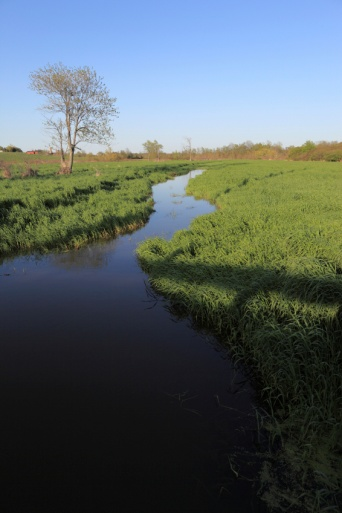17
Nov
Agricultural Fungicides Contaminate Waters Downstream
(Beyond Pesticides, November 17, 2010) Researchers with the U.S. Geological Survey (USGS) have found a dozen agricultural fungicides in the waters and sediments downstream of farms and orchards in western states. Presented November 8, 2010 at the annual meeting of the Society of Environmental Toxicology and Chemistry (SETAC) in Portland, Oregon, the findings represent the first such data on fungicides in the western U.S.
Farmers routinely use fungus-killing compounds to spray or dust food crops, such as strawberries, corn, and soybeans. Some crops receive up to a dozen doses per growing season. Nationwide, fungicide use has risen considerably since the 1990s, reaching 350 million pounds in 2001. However, the environmental prevalence and effects on wildlife and ecosystems, particularly of newer fungicides, are poorly understood, says Kathryn Kuivila, PhD, of the USGS California Water Science Center. Environmental monitoring programs monitor concentrations of few or no fungicides, she notes.
The study entitled, “Occurrence of Azoxystrobin, Propiconazole, and Selected Other Fungicides in US Streams, 2005—2006,” documents the occurrence of fungicides in select U.S. streams soon after the first documentation of soybean rust in the U.S. and prior to the corresponding increase in fungicide use to treat this problem. Water samples were collected from 29 streams in 13 states in 2005 and/or 2006, and analyzed for 12 target fungicides. Nine of the 12 fungicides were detected in at least one stream sample and at least one fungicide was detected in 20 of 29 streams. At least one fungicide was detected in 56% of the 103 samples, as many as five fungicides were detected in an individual sample, and mixtures of fungicides were common. Azoxystrobin was detected most frequently (45% of 103 samples) followed by metalaxyl (27%), propiconazole (17%), myclobutanil (9%), and tebuconazole (6%). The study reveals an indication of a seasonal pattern to fungicide occurrence, with detections more common and concentrations higher in late summer and early fall than in spring. At a few sites, fungicides were detected in all samples collected suggesting the potential for season-long occurrence in some streams.
USGS scientists have recently started to measure fungicide levels at a regional scale. Surveys on streams in southeastern and Midwestern states were published in October. Extending that research to agricultural areas in the West, Dr. Kuivila and her colleagues collected water and sediment samples from sites near three agricultural areas growing potatoes, stone fruits, or lettuce””three crops that, combined, account for half of U.S. fungicide use. In southwestern Idaho, two or more fungicides appeared in almost one-third of the samples from irrigation ditches and streams near a stretch of potato farms. In California’s Central Valley, the researchers found that more than half of the water and sediments collected from the San Joaquin River near stone-fruit orchards contained four or more fungicides. Fungicide incidences were similar for lettuce””growing areas of the central California coastland, and preliminary results indicate that crabs and flounder caught in nearby coastal river estuaries have fungicides in their tissues. While the types of fungicides varied, the scientists identified 18 compounds in the three settings, with six at trace levels.
“Some of these compounds degrade slowly and may persist in the environment for months or years,” said Dr. Kuivila. Furthermore, “the majority of information on toxicity relates to single compounds, but in combinations they may have additive effects.”
This research fills in the gaps concerning fungicides in the environment. Fungicides, typically used in smaller quantities compared with other types pesticides, however there use as increased in recent years. Less than 1% of U.S. soybeans were treated with a fungicide in 2002, but by 2006, 4% were treated. This increase is due to the constant pressure from fungal diseases such as the recent soybean rust outbreak, and the always-present desire to increase crop yields.
Previous USGS reports have documented pesticides and fertilizers in U.S. waters. Low levels of pesticides have also been detected in drinking water. Herbicides like atrazine, metalachlor, and simizine are among those often found in surface waters of 186 rivers and streams sampled by USGS since the early 1990s, and are highly correlated with the presence of upstream wastewater sources or upstream agricultural and urban land use.
The USGS is a non-regulatory agency which often monitors the quality of available, untreated water resources. These studies begin to relate the quality of these resources to drinking water. USGS studies are intended to complement drinking-water monitoring required by Federal, State, and local programs, which focus primarily on post-treatment compliance monitoring.
For more information on water quality, read Beyond Pesticides’ Threatened Waters.
Source: Chemical and Engineering News










